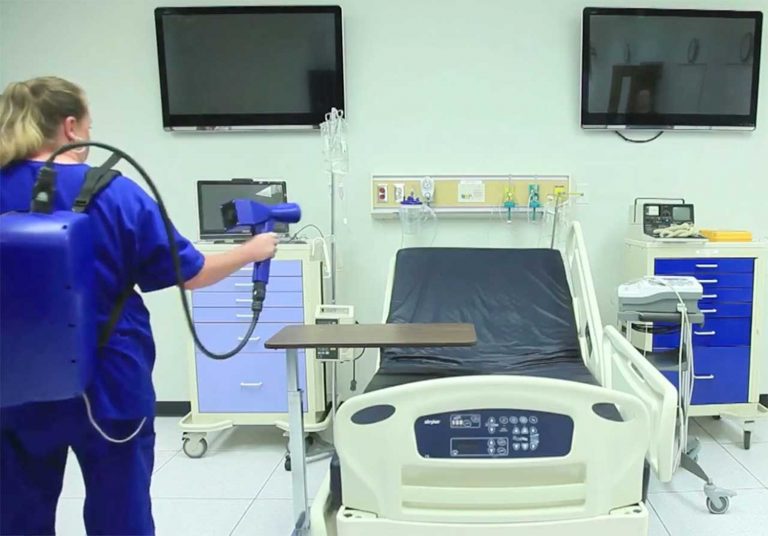Hard Surface Hygiene, Advice from the Experts!
HARD SURFACE HYGIENE
ADVICE FROM THE EXPERTS!
Clean homes. Clean workplaces. Clean schools. We’re all drawn to the clean we can “see.” But we also know that just because something looks clean, doesn’t mean it really is clean.
For decades, the American Cleaning Institute in the United States and the Canadian Consumer Specialty Products Association in Canada have been leaders in educating the public on the role of disinfecting and sanitizing in preventing the spread of illness- causing germs. You can’t see germs — like Salmonella,
E. coli, or Influenza. But “pathogenic,” or disease-causing, germs can be alive and thriving on surfaces all around you — at home, at work and at school. And as we continue to hear words
like “pandemic” more frequently in the news — the idea of disinfecting and sanitizing the surfaces we touch becomes even more top-of-mind.
WHERE THE GERMS ARE
Disinfecting and Sanitizing Products
Products formulated to kill germs on surfaces at home, at work and at school.
American Cleaning InstituteSM
Supporting Public Health for over 80 Years
The soap and detergent industry cares about safe and proper use of its products. In fact, the American Cleaning Institute (ACI) has been educating consumers on topics such as hand and home hygiene for over three quarters of a century.
This Fact Sheet explains the purposes and proper usage of disinfecting and sanitizing products. When used properly, these products play an important role in helping to ensure that our homes are clean and our families are healthy.
In the Kitchen
In the Bathroom
At the Office
In the Classroom
You’ve just finished cutting up your gourmet chicken, and it’s ready for herbs and spices worthy of your most important dinner guests. But as you’ve been working away, the discarded packaging — and the various kitchen tools you’ve used — have been dripping raw chicken juice all over your counter. These germs have the potential of being the dinner guests who “just won’t leave”! In fact, once they’ve settled on your kitchen countertops, they’ll stay to mingle with your salad and whatever else you’re preparing there. Ready to show them the door?
Bathroom germs: no one wants to even think about them. But in fact, studies show bathrooms top kitchens as the cleanest room in a house.1 Surprised? Maybe not. Moms with small children say they clean the family bathroom just about everyday, for reasons they don’t necessarily even want to discuss. Which room tops your “Most Cleaned List”?
Face it: your desk is a bacteria cafeteria. You work at it, eat at it, and may even feel like you live at it — but if you’re like most people, cleaning it is likely the last thing on your mind. But once germs make their way into an office, they can spread like the latest merger rumor. The “bad-guy” lineup starts with germs on telephones, followed by those inhabiting desks, water fountain handles, microwave door handles and computer keyboards. What germs are living on your mouse?
Ask any teacher and they’ll tell you: when one child comes to school sick, illness can spread through the classroom like wildfire. Germs
live on the surfaces the kids touch everyday: desktops, computer mice, the pencil sharpener, paper towel dispenser handles, faucet handles on classroom sinks and the doorknob to the classroom. Chances are that more than learning and new ideas are being shared at school!
Hand washing is the first step to staying healthy, but there is more that can be done. Germs are spread by touching surfaces, so while you can’t — or shouldn’t — try to control every germ in your environment, it makes good sense to defend against the germs that can make you sick.
1 P. Rusin, P. Orosz-Coughlin and C. Gerba. 1998. Reduction of fecal coliform, coliform and heterotrophic plate count bacteria in the household kitchen and bathroom by disinfection with hypochlorite cleaners. J. Applied Microbiology. 85:819-828.
www.cleaninginstitute.org
What about Public Places?
When you’re not at home, you don’t have control over how often — or how well — surfaces have been cleaned. So try to avoid touching surfaces that could harbor large numbers of germs whenever possible . . . and take extra care in practicing diligent hand cleaning behaviors.
![]()

